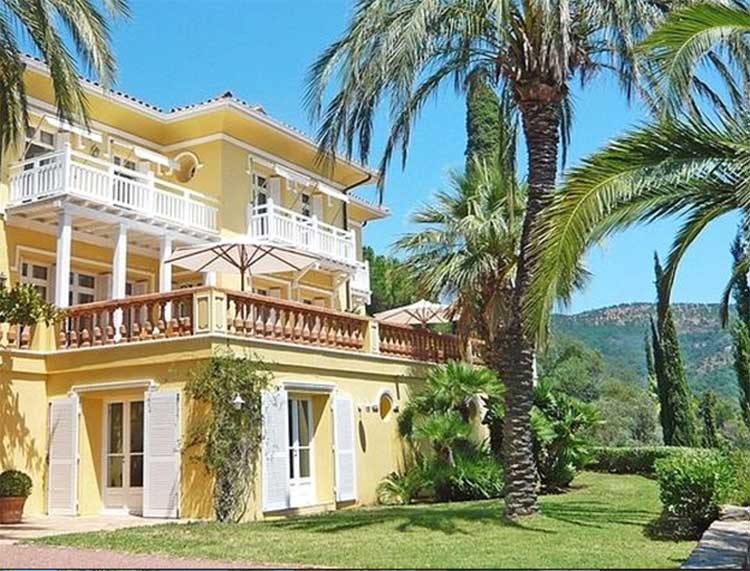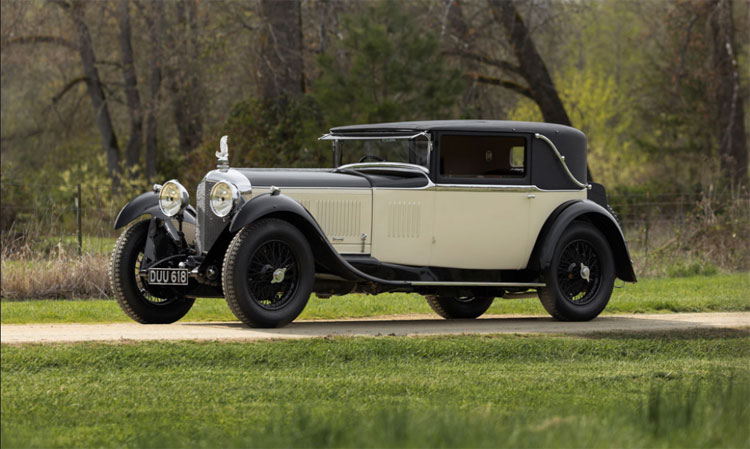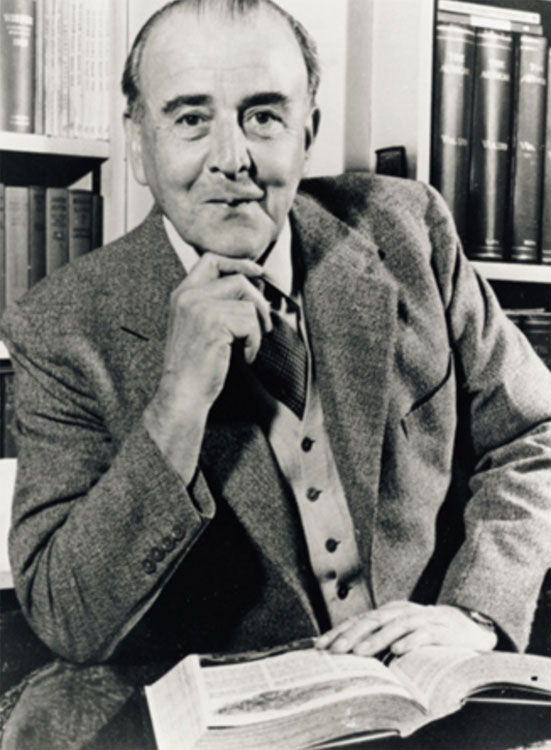W O Bentley and The Bentley Boys
If, in the 1920s, you left the small fishing village of Théoule and headed west on the Boulevard de l’Esquillon in the direction of St Raphael, at the stretch of road called Miramar you would pass a small villa called Le Balcon. Your attention might have been caught by the sight of a hoist and winch in the garden behind the house. The villa was owned by Walter Owen Bentley of Bentley Cars and the winch was designed by him to lift his boat up from the Mediterranean below and deposit it for safety next to the house when this was vacant.

Bentley, always known as W.O., and described as ‘a modest man of mental honesty and reasonableness’ bought Le Balcon for his second wife, Audrey Morten Hutchinson (known as Poppy). Bentley had married her a year after the death of his first wife Leonie Gore, the daughter of an Irish peer. Leonie had died during the Spanish influenza epidemic of 1919. Poppy was the daughter of a successful London barrister. She was also, in contrast to Bentley, extremely sociable and Bentley did his best to establish a holiday home in his, slightly fussy, villa. But, although no stranger to the Riviera, he had little interest in its social life and was rarely at Miramar.
Right – Villa Le Balcon
The villa stood next door to the, then, discreet and elegant St Christophe Hotel which spread itself along the rocks below the corniche road. Beloved of cabinet ministers and those who wished to relax away from public gaze, it had its own salt-water swimming pool, bay and yacht mooring. Now the hotel has been bought by others and is unrecognisable.
Bearing its winged B emblem on the radiator shell, the beautiful road-worthy Bentley motor car is one of the most respected in the world. But, although a brilliant engineer, Bentley always battled with the business side of the company.
Bentley was born in Hampstead in 1888 the youngest of nine children. His father was a successful businessman and his mother Australian born. Educated at Clifton College in Bristol, he left school at 16 to become an apprentice engineer with the Great Northern Railway at Doncaster in Yorkshire. From there he went on to study engineering at King’s College in London, and in 1912 joined his brother Horace to found Bentley and Bentley, where he began his inspired modifications on the internal combustion engine, using aluminium. The first World War brought him a commission in the Royal Naval Air Service where he developed the use of aluminium in aero engines. For this he was awarded the M.B.E. and brought to the attention of Rolls Royce. At this time Sir Henry Royce, who had emerged from such humble beginnings, had already built his beautiful villa Le Canadel, near St. Tropez, where he spent the winters until 1931.

In spite of success following success in the motor competitions of Europe such as Le Mans and Brooklands, by 1925 Bentley Motors was in deep financial trouble and had to be bailed out by the rich heir to a diamond fortune, Woolf Barnato. It was Barnato who, after dinner at the Carlton Hotel in Cannes one evening in 1930, raised a bet that his Bentley Speed Six saloon could better the speed maintained up until then by the Rover Company by beating the Blue Train on its journey from Cannes to Calais. More, that he could be at his club in London before the Blue Train actually reached Calais.
Left – Bentley Speed Six Mulliner
He won the bet of £100 by four minutes but this was consumed by the far greater fine issued by the French authorities for speeding on their roads. The publicity from the race didn’t save Bentley Motors. A year later Barnato, no longer able to finance the company, withdrew and Rolls-Royce bought the company out. The founder of Bentley motor cars, now sidelined, became a discontented employee reduced to test driving cars across Europe. He left Rolls Royce with relief and began to design for Lagonda, Aston Martin and worked on the Armstrong Siddeley Sapphire. All British luxury cars.
In 1931 Bentley’s wife Poppy divorced him, and Le Balcon at Miramar was sold. The grounds for the divorce were frequent adultery between Bentley and Margaret Roberts Hutton at the Grosvenor Hotel in London. Poppy was granted maintenance of £888 annually. Bentley and Margaret soon married and on their honeymoon in 1934 Bentley drove a 3½ litre Bentley. In 1939 he returned to the Riviera with Margaret for a holiday at the St. Christophe hotel and if he gazed over at Le Balcon from their hotel room it was almost certainly without regret. It was while they were there they heard, on the radio of their Lagonda, the declaration of the second World War, Bentley would spend the war years in the Lagonda factory, now involved with armaments. In 1946 the couple returned to the Riviera for a holiday, and for this Bentley bought a simple Standard Eight. With Margaret, he would live a long and happy married life in Surrey, with many trips to the south of France, until his death in 1971 aged 82. He died at the Nuffield Nursing Home at Woking. There were no children from either of his marriages.
At the end of his autobiography he wrote, ‘… my only ambition is to continue to live modestly in this Surrey cottage, retaining an active mind that allows me to do my consulting work for British and American firms – and a bank balance out of the red. Otherwise an occasional glimpse of the Mediterranean sun, my garden and my hobbies, and above all the companionship and comfort of a very happy marriage keep me contented.’
© Copyright: Maureen Emerson 2021
Sources:
- William Holden
- Walter Owen
- The Bentley Owners’ Club
- My Auto World
- National Archives, Kew
- Malcolm Bobbitt. W.O. Bentley: The Man Behind the Marque

